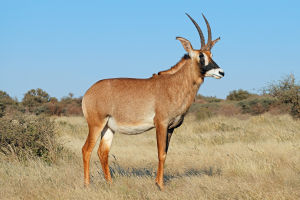The blue-tailed bee-eater is a small bird that lives in the tropics and subtropics and is world-famous for its beautiful and distinctive blue tail.
They belong to the bee-eater family of birds, feed on insects, and often flip through the air and prey, displaying elegant flying skills.
Let's explore this fascinating bird and its role and significance in nature.
The body structure of the blue-tailed bee-eater is similar to that of other bee-eaters. They have a slender body and a slender beak, which is suitable for preying on insects. Their feathers are predominantly green and blue in luster, especially that shiny blue tail, which adds to their unique charm.
Male blue-tailed bee-eaters have brighter tails that unfold into an ornate fan, while females have relatively shorter tails. This distinct sex difference is one of the key traits that attract mates during their breeding season.
Blue-tailed bee-eaters mainly inhabit forests, grasslands, and river banks in tropical and subtropical regions, especially those near water sources. They usually feed on small insects such as bees, wasps, and other flying insects.
Blue-tailed bee-eaters are known for their high-speed flight and unique hunting style, often hovering in the air, and then suddenly swooping down to catch their prey with their pointed bills. Their flying skills are breathtaking, displaying great agility and coordination.
In addition to being excellent at hunting insects, the blue-tailed bee-eater is also a very social bird. They often roost and reproduce in groups, forming large clusters.
During the breeding season, male blue-tailed bee-eaters display stunning courtship behaviors to attract females. They build nests on tall tree branches. Each pair of blue-tailed bee-eaters usually lays 2 to 4 eggs, and the parents jointly incubate and care for the young. This joint caregiving behavior is quite rare among birds and demonstrates the solidarity and mutual assistance of blue-tailed bee-eaters as a family and social unit.
The blue-tailed bee-eater not only plays an important role in the ecosystem but also serves as a reminder of the beauty and diversity of our species. Their unique appearance and behavior have attracted the attention of many bird watchers and photographers, making them one of the popular subjects for nature photography.
However, blue-tailed bee-eaters also face many threats, including habitat destruction, the use of chemical pesticides, and illegal harvesting. All these factors pose a threat to their survival and reproduction and require our protection and attention.
To protect the blue-tailed bee-eater and its habitat, the international community and governments at all levels have taken a series of measures. Establishing nature reserves, promoting sustainable land management and agricultural practices, and strengthening the fight against illegal capture are all important steps to protect the blue-tailed bee-eater.
In addition, publicity and education also play a key role in increasing public awareness and attention to this rare bird and inspiring everyone's awareness and action on nature protection.
The blue-tailed bee-eater is a gorgeous landscape in nature. Its existence has enriched the biodiversity on the earth and also brought us enjoyment and thinking of beauty.
We should cherish and protect such a miracle, let the blue-tailed bee-eater continue to soar in nature, and become a noble symbol of our efforts to protect nature and balance the ecology. Let's work together to create a better future for the survival and reproduction of blue-tailed bee-eaters and other rare species.


